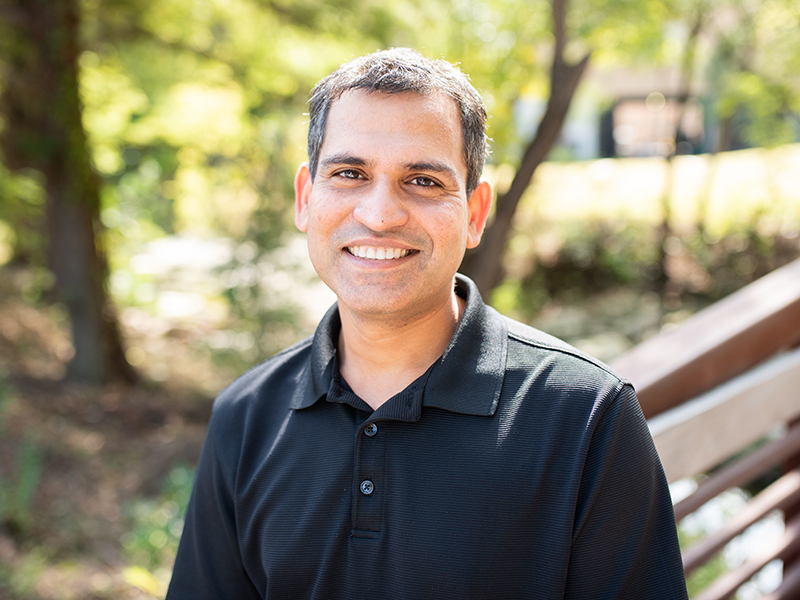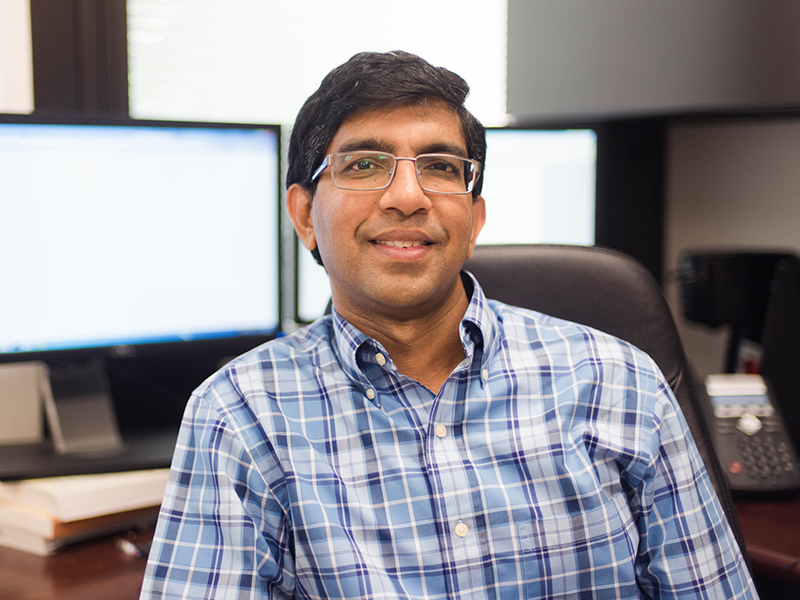
An illustration of the nano channels Texas Engineers developed for rare earth element extraction.
A more efficient and environmentally friendly approach to extracting rare earth elements that power everything from electric vehicle batteries to smartphones could increase domestic supply and decrease reliance on costly imports.
This new method, developed by researchers at The University of Texas at Austin, allows for separating and extracting these in-demand elements where it’s not possible today, opening up new avenues for gathering rare earth elements amid global trade tensions.
“Rare earth elements are the backbone of advanced technologies, but their extraction and purification are energy intensive and extremely difficult to implement at the scales required,” said Manish Kumar, professor in the Cockrell School of Engineering’s Fariborz Maseeh Department of Civil, Architectural and Environmental Engineering and the McKetta Department of Chemical Engineering. “Our work aims to change that, inspired by the natural world.”
The research was recently published in ACS Nano. The researchers developed artificial membrane channels—tiny pores embedded in membranes—that mimic the selective transport mechanisms of transport proteins found in biological systems. These channels are the roadways used by different ions to travel between cells.
Each channel is different, letting only ions with certain characteristics through while keeping others out. That selectivity is critical to many biological processes, including how our brains think.
The researchers’ artificial channels use a modified version of a structure called pillararene to enhance their ability to bind and block specific common ions while transporting specific rare earth ions. The result is a system that can selectively transport middle rare earth elements, such as europium (Eu³⁺) and terbium (Tb³⁺), while excluding other ions like potassium, sodium, and calcium.
“Nature has perfected the art of selective transport through biological membranes,” said Venkat Ganesan, professor in the McKetta Department of Chemical Engineering and one of the research leaders. “These artificial channels are like tiny gatekeepers, allowing only the desired ions to pass through.”


Texas Engineers Manish Kumar (left) and Venkat Ganesan (right)
Rare earth elements are split into several classes (light, middle and heavy), each with different properties that make them ideal for specific applications. Middle elements are used in lighting and displays, including TVs, and as magnets in green energy technologies, such as wind turbines and electric vehicle batteries.
The U.S. Department of Energy and the European Commission have identified several middle elements, including europium and terbium, as critical materials at risk of supply disruption. With demand for these elements expected to grow by over 2,600% by 2035, finding sustainable ways to extract and recycle them is more urgent than ever.
In experiments, the artificial channels showed a 40-fold preference for europium over lanthanum (a light rare earth element) and a 30-fold preference for europium over ytterbium (a heavy rare earth element). These selectivity levels are significantly higher than those achieved by traditional solvent-based methods that require dozens of stages to achieve similar results.
Using advanced computer simulations, they discovered that the channels’ selectivity is driven by unique water-mediated interactions between the rare earth ions and the channel. These interactions allow the channels to differentiate between ions based on their hydration dynamics—how water molecules surround and interact with ions.
Kumar and his team have been working on this research for more than five years. He is an expert in membrane-based separations, applying that knowledge to clean water generation as well.
The researchers envision their technology being integrated into scalable membrane systems for industrial use. The goal is to make it easier to conduct ion separations in the U.S., using clean energy.
They’re working on a platform for these channels that allows users to select a variety of ions to gather. This could include other critical minerals like lithium, cobalt, gallium, and nickel.
This is a first step towards translating nature’s sophisticated molecular recognition and transport strategies into robust industrial processes, thus bringing high selectivity to settings where current methods fall short,” said Harekrushna Behera, a research associate in Kumar’s lab who worked on the project.
The team includes researchers from the Fariborz Maseeh Department of Civil, Architectural and Environmental Engineering, McKetta Department of Chemical Engineering, and the College of Natural Sciences’ Department of Chemistry. They are: Tyler J. Duncan, Laxmicharan Samineni, Hyeonji Oh, Ankit Jogdand, Arnav Karnik, Raman Dhiman, Aida Fica, Tzu-Yun Hsieh.
